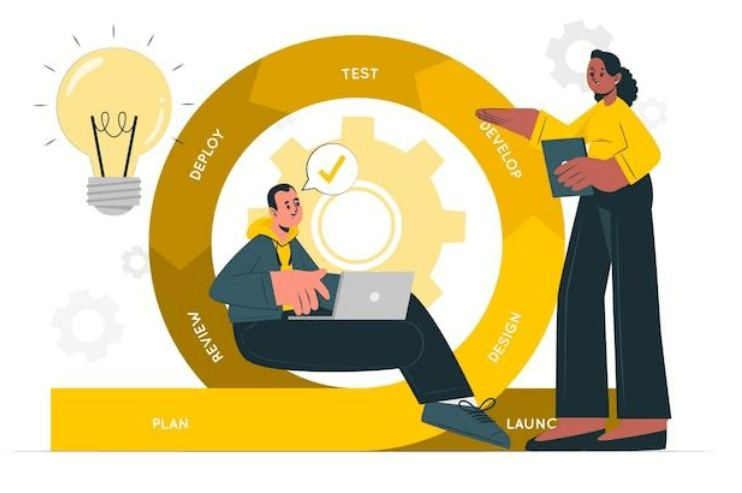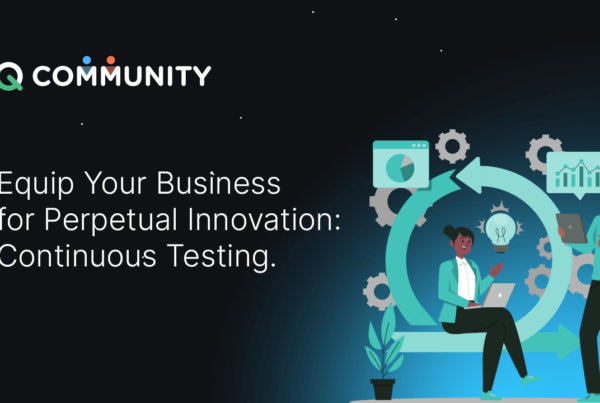
The Agile Manifesto is the unifying philosophy behind agile methodologies like Scrum, Extreme Programming, and Feature-driven development (FDD).
So, without any further delay, let's get started.
What Is the Agile Manifesto?

The Agile Manifesto defines the values and principles for agile software development. The Agile Alliance team created this manifesto in February 2001. Their objective was to develop an alternative to the "traditional" waterfall framework, which had its share of challenges.
The Agile Manifesto led to the creation of cross-functional agile project teams. Primarily, the Agile Manifesto is based on the following four values:
- Individuals and interactions
- Working software
- Customer collaboration
- Responding to change
Get Started for free today.
No credit card needed | No obligations
What are the 4 values of the Agile Manifesto?
Let us look at each of these 4 Agile values in detail.
1. Individuals and Interactions – Over Processes and Tools
The Agile Manifesto outlines that agile teamwork and communication are more important than software development processes and tools. Effectively, software development teams drive application development according to business requirements. While development processes and tools are important, they take lesser precedence.
Development projects would not create high-quality products without the right tools and technology. However, the main point is that software tools must adapt to business needs or requirements – and not the other way around.
Along with individual expertise, continuous interactions, and communication are also crucial in any application development project. In any agile environment, communication is dynamic and based on specific project needs. This is different from a "process-centric" approach, where team communication happens according to a predefined schedule.
2. Working Software – Over Comprehensive Documentation
In the traditional mode of development, product documentation often consumed a lot of time and energy. Typically, project documents included creating and approving the following:
- Product specifications
- Technical requirements
- Interface designs
- Testing plans
This generally delayed the completion of the project. The Agile Manifesto shifts the focus from documentation to the actual working of the application. It emphasizes creating "great products" and not documentation. This means creating user-friendly and easy-to-use applications with self-explanatory features and satisfying customers' requirements.
The agile approach does not eliminate documentation but leverages it to help developers improve their work. For example, customer requirements documented as "user stories" are useful for developers to build a new product functionality. Furthermore, product documentation is a useful resource for users learning to use the product.
3. Customer Collaboration – Over Contract Negotiation
In the Waterfall model, customer contracts were more important than satisfied customers. After signing a contract, customers provided details of what they wanted. The final product reflected the terms mentioned in the contract instead of what customers needed. They could negotiate the contract terms only before (or after) the contract period.
This traditional procsources and time. Contract negotiations also created restrictions that did not help create a high-quality product. The Agile Manifesto shifted the eess resulted in the wastage of both development remphasis from contract negotiation to customer collaboration. This is easy to achieve through continuous development and improvement.
In the agile working model, the customer is now an integral part of the development process. With effective collaboration, customers can now provide their feedback throughout the development process. This is useful for product development teams to design the product according to the customer's needs.
4. Responding to Change – Over Following a Plan
In the modern business environment, enterprises must adapt quickly to changing market conditions and customer requirements. Change is also a key mantra for software development. This includes changes related to:
- Technology
- Customer needs
- Business requirements
- Market trends
The traditional Waterfall model was regarded as inflexible and slow to adapt to external changes. This model involved creating and following a fixed project plan. Every project plan included a defined set of features and changes to be implemented until the project deadline. As a result, businesses faced project delays, leading to dissatisfied customers.
On the other hand, the Agile Manifesto defines shorter iterations that are better adapted to respond to sudden changes. An example of this value is the Minimum Viable Product (MVP), which is easy to change (or improve) from one iteration to the next.
Besides these 4 values, the Agile manifesto is also based on 12 defining principles.
What Are the Defining Principles of the Agile Manifesto?

Agile software development is based on the following 12 defining principles namely:
1. Ensuring Customer Satisfaction Through Early and Continuous Deliveries
This means that customers are satisfied when they can buy products at shorter intervals instead of waiting long for the next release.
2. Accommodating Requirement Changes
This principle defines the ability to adapt to product requirement changes, thus avoiding any delays.
3. Delivering Working Software Frequently
This principle focuses on the frequent delivery (in weeks or months) of software products to customers, thus facilitating timely feedback and improvements.
4. Enabling Collaboration Between Business Users and Developers
This defines the need to build products that meet business requirements and solve business problems — this demands constant collaboration between cross-functional teams.
5. Creating a Supportive Development Environment
This agile principle aims to create a motivated project team, thus improving their overall productivity levels for developing a quality product.
6. Enabling Face-to-Face Communications
This emphasizes the importance of team communication and information sharing among the project team members.
7. Releasing a Working Software
This principle reiterates the importance of development teams developing and releasing working software to their clients.
8. Maintaining a Constant Speed of Development
This agile principle promotes the idea of sustainable development, where teams can maintain a consistent speed in delivering working software.
9. Focusing on Simplicity
This means that agile development teams must prioritize product features and focus on "getting the job done for now."
10. Ensuring Technical Excellence
This principle encourages agile teams to focus on technical excellence and product design, which elevate agility.
11. Creating Self-Organizing Teams
This principle focuses on creating motivated and self-organizing teams with ownership and decision-making abilities.
12. Enabling Continuous Improvement
This agile principle defines how development teams can continuously improve their products, processes, and methodologies based on received feedback.
Why ACCELQ Is the Best Choice for Agile-Based Automation
With its AI-powered codeless test automation platform, ACCELQ is among the best platforms for implementing agile-based automation. With this platform, you can leverage the benefits of the Agile Manifesto and its defining principles.
All in all, with ACCELQ, you can improve the speed of your product deliveries. Get in touch with our QA consultants to know more.
Related Posts
 How Continuous Testing Eliminates QA Bottlenecks for Teams?
How Continuous Testing Eliminates QA Bottlenecks for Teams?
How Continuous Testing Eliminates QA Bottlenecks for Teams?
 What Are Agile Testing Quadrants, and How Are They Used in Agile Projects?
What Are Agile Testing Quadrants, and How Are They Used in Agile Projects?


































